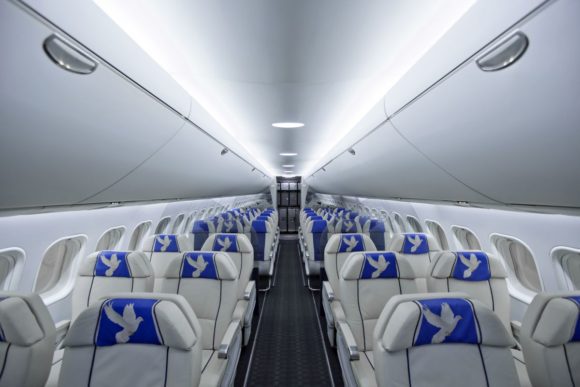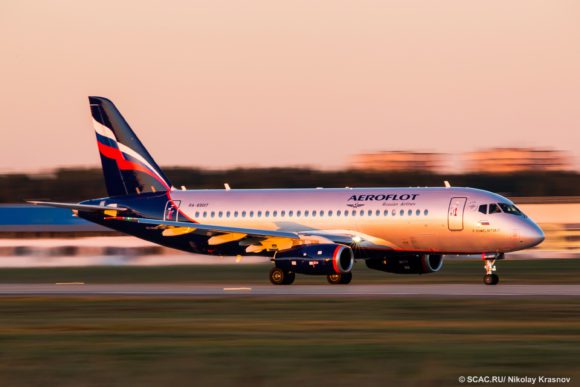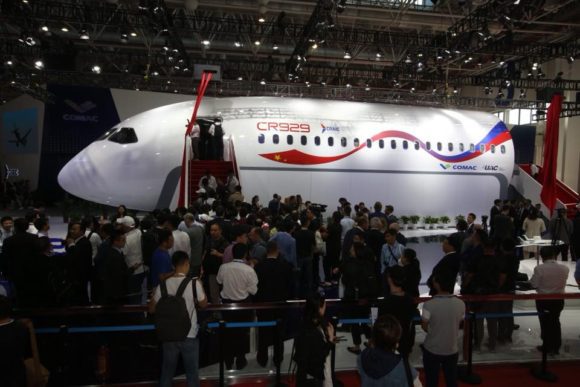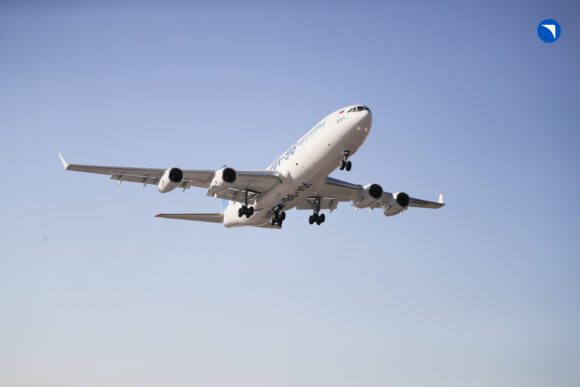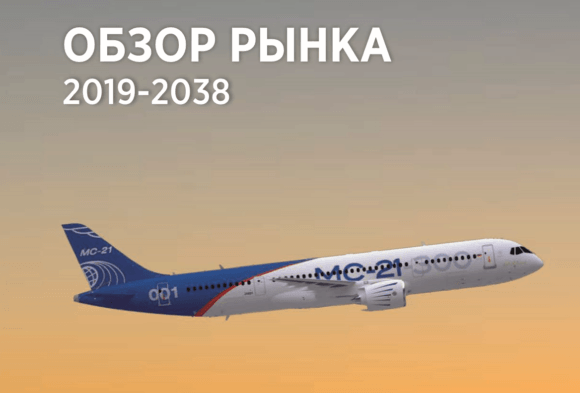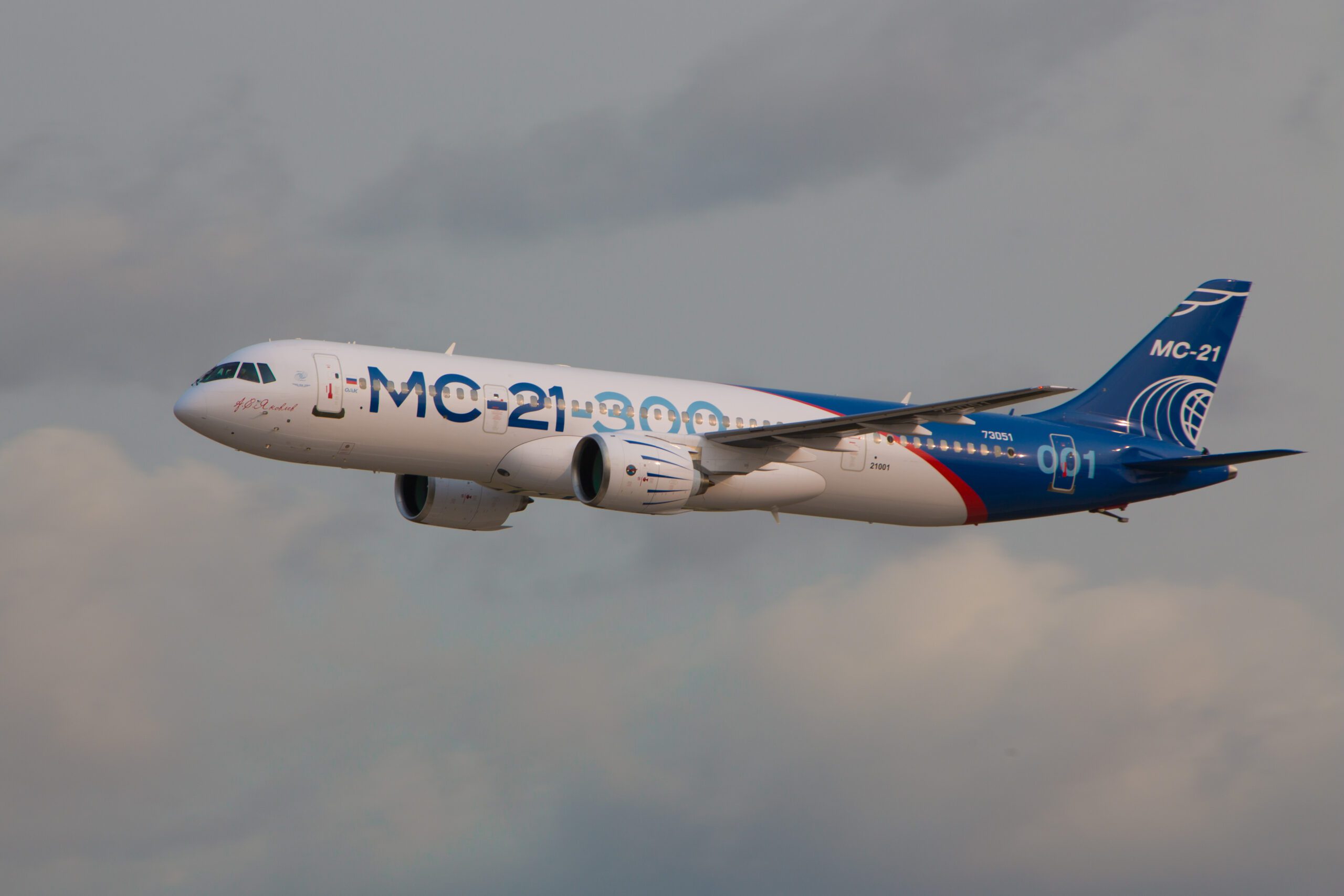
MC 21 from Irkutsk 1
After the Paris Air Show and the summer break, the global aerospace industry assembles again next week. In Russia, for the MAKS2019 air show at Zhukovsky Airport near Moscow from August 27 – September 1. While Airbus will show its A350-900, Embraer the E195-E2 and Boeing most likely a 787, the show will be of most interest because of the ‘state of the union’ of the Russian aviation industry.
Traditionally, MAKS is a showcase for the military and defense industry with conglomerate Rostec alone showing 250+ products that include 40 new items. It’s the defense industry that is driving the aerospace industry, spurred by a geopolitical reality that resembles a new Cold War since the previous MAKS-edition in 2017. Enter the strained Trump-Putin relationship here, at least a major factor in this.
Economic sanctions on Russia that were introduced since 2014 following the war in Ukraine, the downing of MH17, the poisoning of Russians in the UK, the handling of opposition, etc have had a profound effect on the health of Russia’s economy and thus commercial aviation industry, which is the focus of Airinsight. It has made the national industry even more introspective, just as Russian OEMs were trying to connect to Western counterparts.
Under the Rostec umbrella, the Russian industry has undergone a major restructuring and consolidation to bring the various brands of United Aircraft Corporation (UAC) even more together. Sukhoi Civil Aircraft and Irkut Corporation now form a united commercial aviation division.
The (red) star of this year’s MAKS will be Russia’s newest airliner, the Irkut MC-21. Its maiden flight on May 28, 2017, came just too late for the type to attend that year’s edition. The aircraft has failed to show up so far in Paris, Farnborough, or any other major (Western) air show. It will be making its public appearance at Zhukovsky, which conveniently is the home of the three test aircraft that are based here at the Gromov Flight Research Institute.
Mock-up of the Irkut MC-21 cabin. The real cabin will be unveiled at MAKS 2019. (Irkut)
Two MC-21s will participate in the flying display, but of most interest will be test aircraft 003 fitted with a 2-class interior. So far, Irkut has only shown a mock-up of the 3.81 meter-wide cabin, the widest in its class: 11 cm over the Airbus A320neo-family, 27 cm over the Boeing 737 MAX and 53 cm over the Airbus A220. The MC-21-300 is advertised as a 163-seater with two classes or 211 seats in a single configuration, offering Zodiac seats as standard. We will have to wait how Irkut has tweaked the cabin compared with the mock-up.
International sanctions have hurt Irkut, especially the manufacturing of the sophisticated composite wing made without autoclave through vacuum infusion at JSC Aerocomposite in Ulyanovsk. No longer able to source composites from outside Russia, Irkut has worked hard to find an alternative domestically. Reverting to a non-composite wing structure was briefly considered but never a serious option. Because of the sanctions certification of the MC-21 has slipped by six months to early 2021, with IrAero and Aeroflot the first operators.
So far US sanctions haven’t prevented the Irkut from receiving Pratt & Whitney PW1400s Geared Turbofans for flight testing, but the development of the less advanced Aviadvigatel PD-14A has been accelerated to be prepared for the worst if tensions increase.
Two years ago at MAKS, Irkut announced a raft of orders for the MC-21. The type is overly dependent on Russian lessors like Ilyushin Finance, VEB Leasing, Avia Capital Services, and Sberbank, some of which are directly involved in the project. Except for Cairo Aviation the MC-21 order book of some 175 aircraft is dominated by airlines and lessors operating within the former USSR, but recently the UAC sales team has been actively promoting the aircraft in Turkey.
Certification outside Russia is elementary if the type wants to be successful. For this Irkut is working closely with the European Union Aviation Safety Agency (EASA), which is actively participating in the certification flight test program.
The Sukhoi Superjet 100 has a difficult task to regain credibility. (Nikolay Krasnov)
The MC-21 has to outclass her little sister Superjet 100 on at least one thing: reliability. That aircraft has been in service for over eight years now but has been marred by technical issues that left aircraft grounded and out of service. The lack of proper support and bad build quality had driven Mexico’s Interjet to the point of almost returning its entire SSJ100 fleet, a story later denied by both parties. Lufthansa’s Brussels Airlines was also far from happy with the type leased from CityJet.
The fatal crash in Moscow on May 5, in which bad weather seems to have been a major factor, hasn’t benefitted the Sukhoi’s reputation. UAC is still hoping to attract new customers, especially for the revamped Superjet 100 or smaller 75 that have been on offer since 2018.
Updates for Il-114 and Il-96
In various stages of construction or assembly are two other airliners that have received an update. Ilyushin has just completed production of the prototype wing box of the Il-114-300 turboprop in Voronezh. It will be integrated into the aircraft in Lukhovitsy next month, but first flight of the 50-64-seater with Russian powerplants is expected only for late next year and first deliveries in 2022 or 2023.
Also under assembly in Voronezh is the first Il-96-400M, the 9.65 meters extended and modernized version of the -300. It has updated PS-90 engines instead of the originally planned PD-14s but still should be an improvement over its predecessor.
Russia’s real bid for the medium- to long-haul market is, of course, the CR929, developed with China’s COMAC under the CRAIC-partnership. At MAKS further program updates are expected and a cabin mock-up will be on display, having been unveiled in Zhuhai last year. The concept design is expected to be frozen by the end of this year, with tier 1-suppliers to be selected in Q1 2020. But as website Rusaviainsider.com noted UAC and COMAC still have not decided on a joint engineering center, which seems to indicate the organizational structure is far from complete.
Cabin mock-up of the CR929 was first shown in Zhuhai. (UAC)
While a request for proposal put Western powerplants from either Rolls-Royce and General Electric in pole position for the CR929, at least the Russians now seem to favor a home-made engine: the PD-14-based Aviadvigatel PD-35. First flight of the CR929 is planned between 2023 and 2025.
Views: 0

